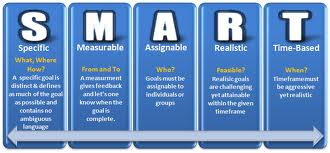 Many years ago I traveled the Midwest region as an internal consultant working for a large national non-profit organization. For part of my time there, I worked with countless local affiliated organizations on planning and implementing an annual campaign focused on face-to-face solicitation strategy. Some agencies took to it like a duck to water, and others just struggled. Every once in a while (typically when I’m contemplating the origins of the universe), I think back to those days and wonder what the difference was between those two realities.
Many years ago I traveled the Midwest region as an internal consultant working for a large national non-profit organization. For part of my time there, I worked with countless local affiliated organizations on planning and implementing an annual campaign focused on face-to-face solicitation strategy. Some agencies took to it like a duck to water, and others just struggled. Every once in a while (typically when I’m contemplating the origins of the universe), I think back to those days and wonder what the difference was between those two realities.
Whenever I get into one of those “WHY?” moods, I’ve concluded that differences in the following factors must be what made the difference:
- resource development skill sets
- state of donor donor readiness
- board of directors
- community factors
While I am sure all of these things play a role, I think it might be even more simple.
This morning I was enjoying my coffee and reading a book when I came across the following passages from the book “The Magic of Thinking Big” written by David Schwartz:
“Desire, when harnessed is power.”
“Success required heart and soul effort and you can only put your heart and soul into something you really desire.”
“When you surrender yourself to your desires, when you let yourself become obsessed with a goal, you receive the physical power, energy, and enthusiasm needed to accomplish your goal. But you receive something else, something equally valuable. You receive the ‘automatic instrumentation’ needed to keep you going straight to your objective.”
While I’ve always believed in the power of goal setting, I guess I’ve never seen it in this light or from this perspective.
So, the answer to my original question very likely is simple . . . those who succeeded just desired it more and those that didn’t do well didn’t.
I guess this is why successful fundraising professionals are focused on measurable goals such as:
- campaign and event contribution goals
- sponsorship goals
- grant writing goals
- donor retention goals
- new donor acquisition goals
These goals are encapsulated in strategic plans, fundraising plans, stewardship plans, major gift prospect cultivation plans, annual performance plans, etc.
What type of fundraising-related goals does your organization have? Where are those goals written down? How do those goals get translated into your individual goals and where are those written? Were those goals developed collaboratively and do they align with what you’re passionate about? If not, how do you bridge that gap in order to avoid failure?
Please scroll down and share your thoughts and experiences in the comment box below.
Here’s to your health!
Erik Anderson
Founder & President, The Healthy Non-Profit LLC
www.thehealthynonprofit.com
erik@thehealthynonprofit.com
http://twitter.com/#!/eanderson847
http://www.facebook.com/eanderson847
http://www.linkedin.com/in/erikanderson847

